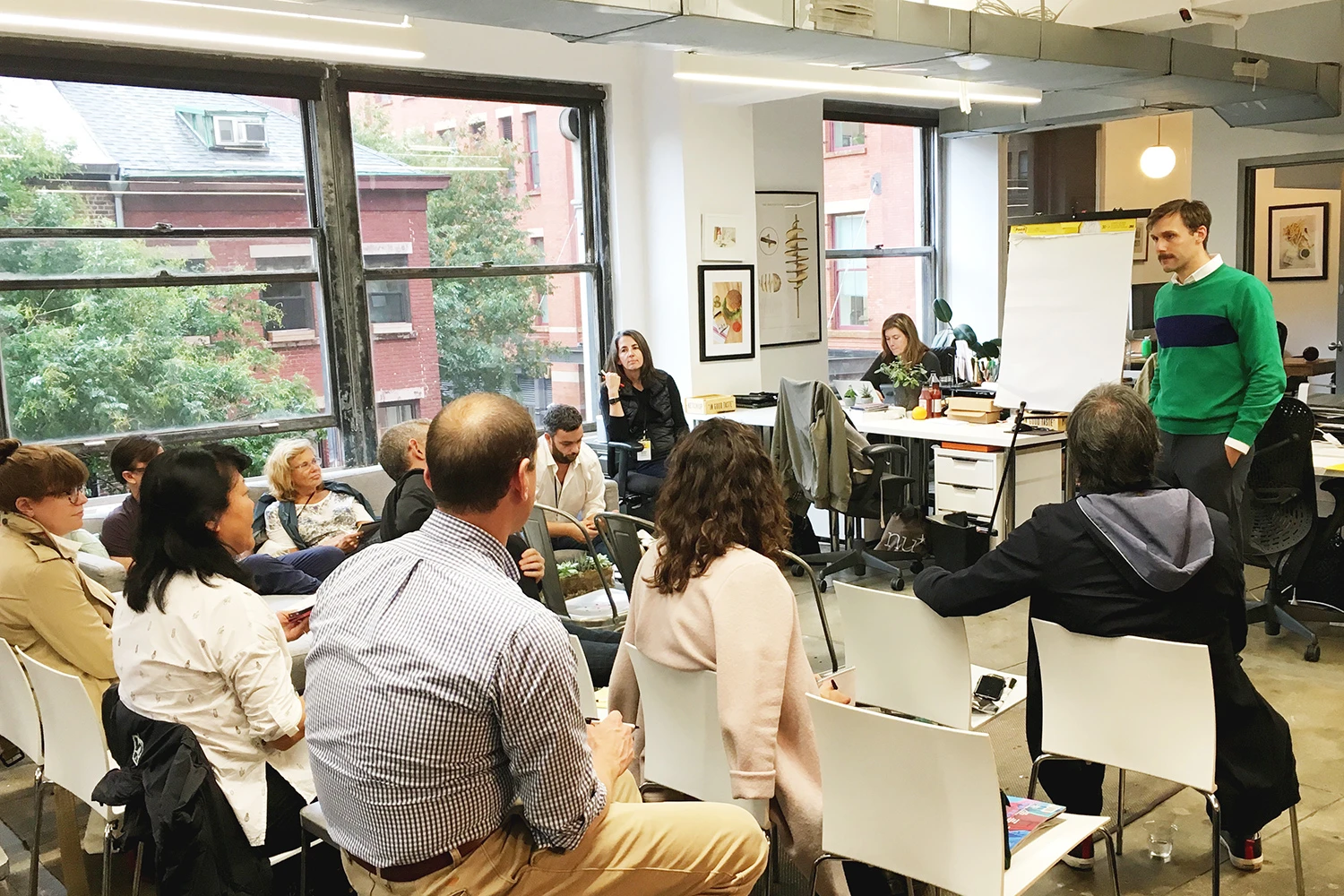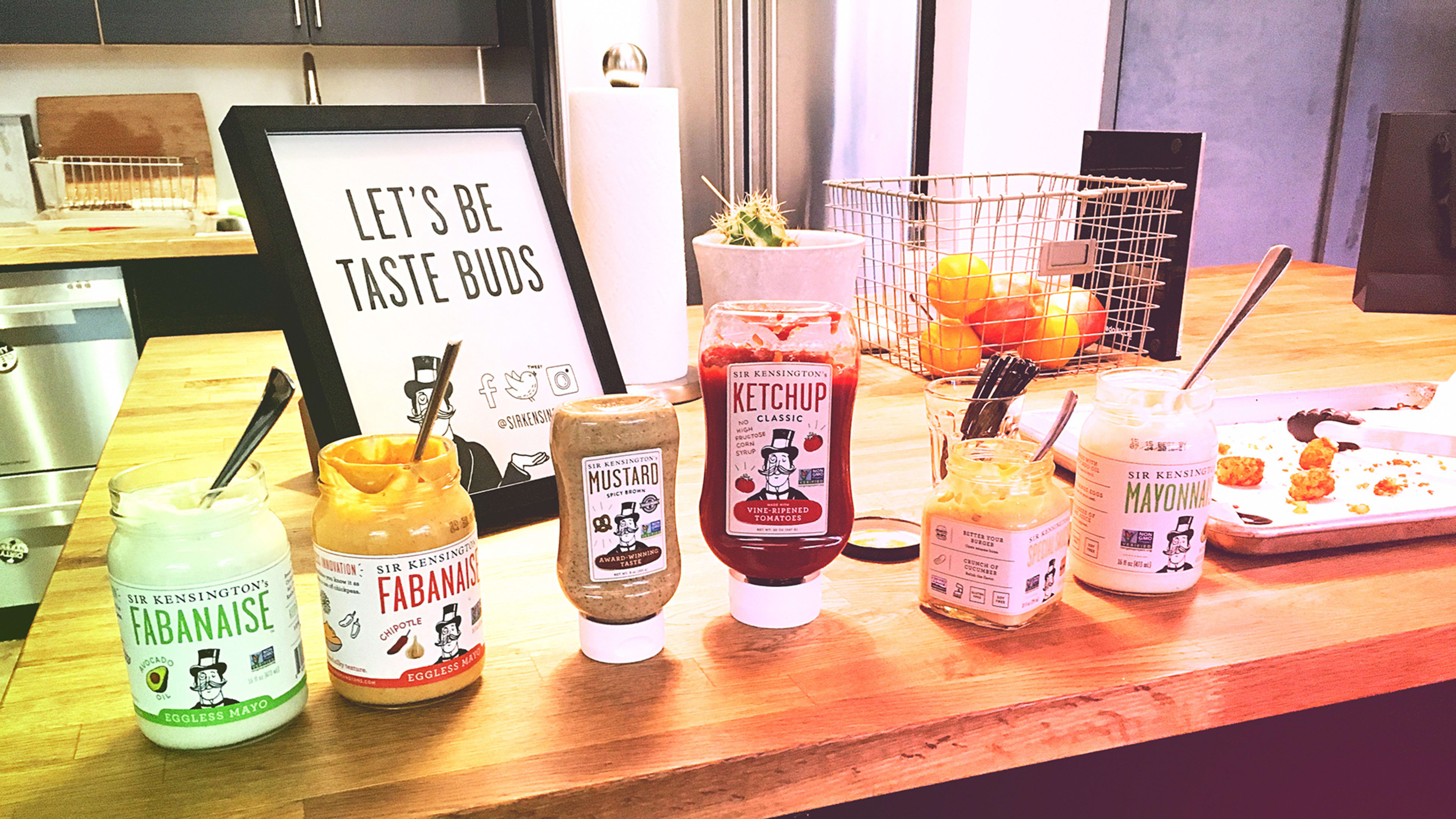It all started with a made-up English nobleman named Sir Kensington, a character crafted by cofounders Scott Norton and Mark Ramadan when they were still in school at Brown University.
Basically, the plan was to take Heinz Ketchup and then do everything opposite, Norton told attendees of this year’s Fast Company Innovation Festival. “We said, okay, Heinz is plastic, then we’re going to do glass,” Norton says. “And if Heinz is squeezed out, let’s give ours a wide-mouthed jar and call it a scooping ketchup. And if Heinz is really quintessential Americana, with the roadside diner and the McDonald’s, then let’s be a little more rarified, a little more exotic. Let’s be English. So we created Sir Kensington.”
The aspiring ketchupreneurs knew that even if they had a great product, with real ingredients, no one would buy it if they didn’t know it existed. Now, nearly a decade since the company founded, Sir Kensington’s is available at Whole Foods, with Blue Apron meal kits, and in restaurants around the country. In April, it was acquired by Unilever, which hopes to grow the brand even bigger. Here’s how Sir Kensington’s did it.

1. Make your branding work for you
When Norton and Ramadan were first starting out, they lacked the advertising budget and reputation to make the big splash they wanted. “So we said, this package is going to need to work really hard,” Norton says. “We always say that people taste with their eyes before they taste with their tongues.”
So the company created a whole backstory for Sir Kensington, including an Oxford education and time spent hosting salons attended by Catherine the Great. The “Sir Kensington” character, though fictional, allowed the company to humanize their products and offer a more inventive story than just, “college kids making ketchup,” Norton says.
2. Don’t forget about the “why?”
Norton says a major rookie entrepreneur mistake is to focus on the “what” instead of the “why.” Take time to outline your values, and then put them someplace your whole office can see.
At Sir Kensington’s, the company’s four core values are emblazoned on white glass plates, mounted on the wall of the company’s New York HQ: “Our secret ingredient is people.” “We think long term.” “We act with honor.” We make condiments with character.” The “why” is what makes you, and your business, unique.
3. Imagine you’re designing a religion
During the Fast Company Innovation Festival session, Norton had attendees write out what their company does and what makes it different. Then he told them to increase the level of emotion. The results turned a sentence like “Sir Kensington’s makes better-for-you condiments” into the punchier and more impactful, “Sir Kensington’s brings integrity and charm to overlooked foods.”
The lesson? Don’t be afraid to infuse a little drama into how you talk about your company. Norton suggests pretending like you’re creating your own religion, and then branding accordingly. “[You want to be] something people will be so thrilled about that they’ll advocate for you,” Norton says. “They’ll evangelize for you. And your team will be able to become clergy, so to speak. Religion is a highly motivating and emotional thing, and that’s what a good brand is, too. “
Recognize your brand’s excellence by applying to this year’s Brands That Matter Awards before the early-rate deadline, May 3.
